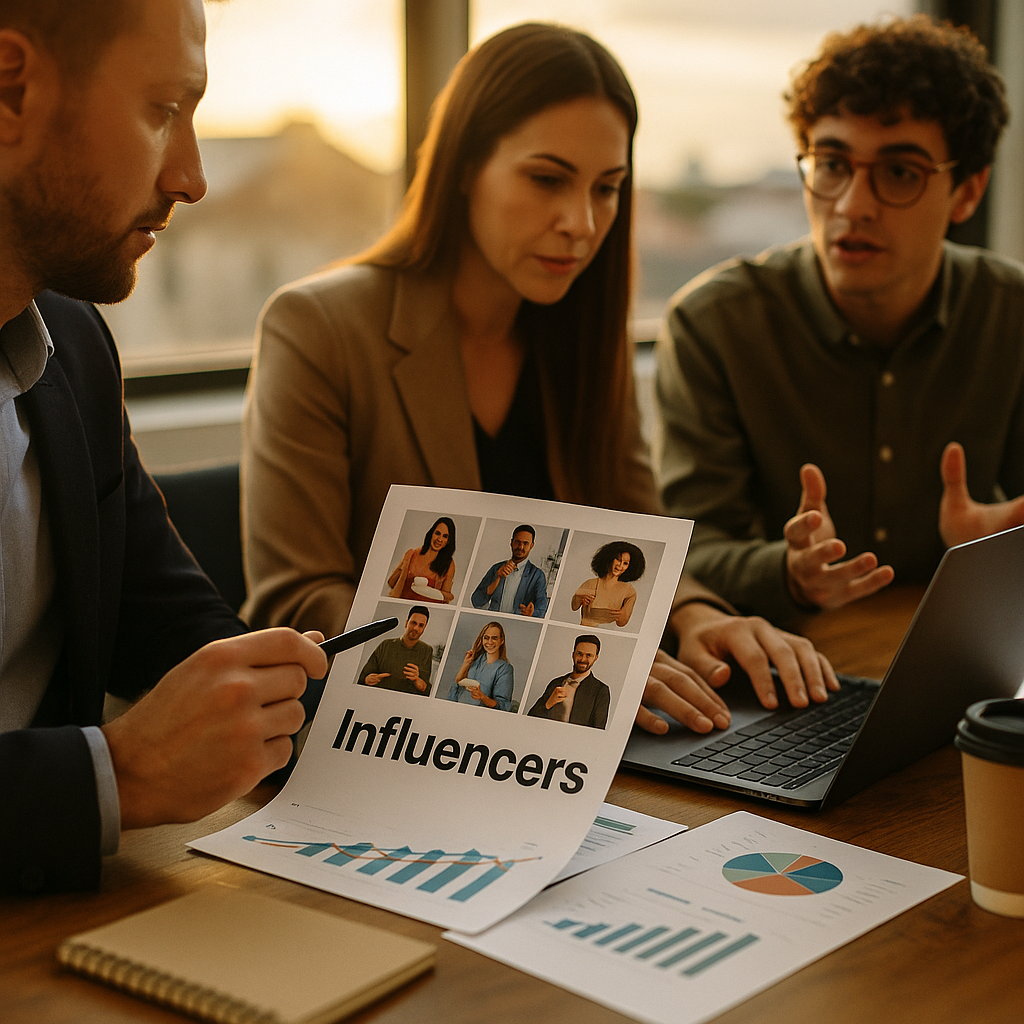Building a business case for an increased influencer marketing headcount is essential for brands aiming to accelerate their growth in 2025. As influencer partnerships evolve, proving the ROI and necessity for expanding your team requires more than just anecdotal evidence. Discover how to strategically present your case and win buy-in from key stakeholders with actionable insights.
Understanding the Value of Influencer Marketing Investment
Before crafting a compelling business case, it’s crucial to articulate the influencer marketing investment value to decision-makers. In 2025, influencer marketing accounts for over $30 billion in global ad spend, according to recent Statista data. Brands leveraging these partnerships report a 68% higher return on marketing investment compared to traditional tactics.
With influencer content fueling brand discovery and purchase intent, more companies are seeking specialists to manage outreach, content collaboration, and compliance. Brands without sufficient headcount risk slower campaign execution and missed opportunities. Emphasize that increased team bandwidth leads directly to
- Higher engagement rates
- Stronger relationships with creators
- Improved brand reputation and trust
- Faster adaptation to platform changes
Setting the stage with these facts establishes the foundational need for added resources in your proposal.
Identifying Resource Gaps and Team Needs
Pinpointing your current influencer marketing resource gaps is a pivotal step in substantiating your request. Begin with a thorough team audit, covering:
- Current influencer partnership volume managed per team member
- Workflow bottlenecks (e.g., contract negotiation, campaign reporting, content approval)
- Skill set gaps—especially in data analysis, platform expertise, and relationship management
- Overtime hours frequently logged by your current team
Benchmarks from Influencer Marketing Hub’s latest report show that top-performing brands maintain a 1:10 manager-to-influencer ratio. If your team consistently exceeds this, or if deliverables are delayed, quantify the impact in terms of missed revenue, lower campaign volume, or inadequate performance insights. Use campaign case studies to demonstrate how additional headcount correlates with improved outcomes.
Quantifying the Impact and Return on Additional Headcount
Your proposal gains credibility when you directly link ROI for influencer marketing team expansion to business goals. Model projections using current data:
- Estimate how many more campaigns a new hire would enable per quarter
- Project incremental reach, engagement, or conversions from increased bandwidth
- Analyze the cost of errors or delays due to understaffing
- Compare talent costs to potential incremental revenue (using recent average campaign ROIs online for accuracy)
For example, if your current coordinator manages eight campaigns monthly with a 4.5x ROI, a second hire could potentially double output with an 80% efficiency rate due to onboarding and ramp-up. Include sensitivity analyses and cite current market salaries for influencer marketers. Today’s best business cases pair optimistic projections with conservative, realistic scenarios to earn executive trust.
Building Executive Buy-In Through Strategic Storytelling
Gaining executive approval for influencer marketing growth requires more than numbers. Craft your narrative:
- Highlight successful competitor examples: Share recent wins where rival brands outpaced yours with larger teams.
- Connect proposed roles with critical business objectives: Brand awareness, Gen Z audience growth, or conversion rate improvement.
- Address risk management: Emphasize how added headcount will bolster compliance, crisis management, and proactive reputation control.
Use clear visuals—charts, timelines, and impact ladders—to communicate the difference between “current state” and “future state” with expanded headcount. Present a roadmap for onboarding new hires, metrics for evaluating success, and a phased approach if budget constraints exist. End with a strong ask that ties your request directly to company vision and 2025 growth targets.
Overcoming Objections and Demonstrating Lasting Value
Addressing common challenges in influencer marketing team growth strengthens your case. Anticipate leadership concerns, such as:
- Budget limitations
- Technological solutions vs. headcount (e.g., “Can we automate this?”)
- Perceived volatility of the influencer landscape
Offer evidence that talented professionals can optimize paid tools, interpret data contextually, and nurture the kind of creator relationships that algorithms cannot. Emphasize adaptability to evolving platforms and regulations—skills that automation alone cannot replace. Support your proposal with testimonials from existing team members or creators who underscore the value of human oversight and collaboration.
By refuting objections with data and expert insights, you’ll demonstrate both preparedness and strategic leadership.
Conclusion
Expanding influencer marketing headcount is a strategic investment in sustained brand momentum. Build your business case with data-driven projections, clear resource assessments, and a powerful executive narrative. By anticipating objections and showcasing direct business value, you’ll be positioned for buy-in and equipped to drive influencer marketing success well into 2025 and beyond.
FAQs: Building a Business Case for Influencer Marketing Team Growth
- How do I quantify the ROI of adding influencer marketing staff?
Model how additional campaigns or improved efficiencies increase reach, engagement, or conversions. Reference industry benchmarks and project measured revenue impact against hiring costs to demonstrate net value. - What evidence supports the need for more influencer marketing staff?
Audit team workloads, highlight bottlenecks, and present campaign delays or missed opportunities. Benchmark against competitor team sizes and industry best practices in 2025. - How can I address concerns about automation replacing team growth?
Emphasize that automation aids, but doesn’t replace, human creativity, strategy, and relationship-building—skills essential to high-performing influencer programs. - Which roles are most important when expanding an influencer marketing team?
Prioritize hires for relationship managers, data analysts, and compliance specialists to ensure holistic campaign execution, measurement, and regulatory safety. - How do I ensure new hires deliver measurable results?
Define clear onboarding metrics, ongoing KPIs, and regular performance reviews tied to reach, engagement, and ROI. Use a phased approach to hiring if needed.
